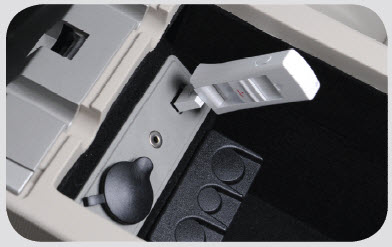Wireless Networking: Nine 802.11n Routers Rounded Up
Router Reignition
Looking back through the archives, we noticed that it had been a long time—indeed, a long, lonely time—since we’d taken a hard look at the wireless networking space, and for that we apologize. With so many amazing things happening in the worlds of CPUs, GPUs, storage, and such, it’s easy to overlook networking. After all, with 802.11n now a finalized standard and the nearly identical Draft 2.0 spec appearing in retail products since mid-2007, there haven’t exactly been any bombshells in the wireless world lately.
And yet...the rest of the market hasn’t stood still. Since the dawn of Draft 2.0, we’ve seen the rise of netbooks, smartphones embracing dual-radio cellular and WiFi, an ever-increasing array of wireless home theater and VoIP devices, and even the first steps toward making cars into hot spots (think Microsoft SYNC). Add to this the unstoppable march to widespread high-def video streaming across any number of platforms and devices. The need for a solid WiFi foundation in your home is bigger than ever.
When early draft 802.11n gear first came available, we were decidedly underwhelmed. It was only marginally better than 802.11g on a good day, especially if you were using one of the dual-channel “turbo” versions. Without channel bonding, it was common for us to see real world, sustained 802.11a or g throughput in the 15 Mb/s range. By 2006, we had multiple antennas and MIMO technology (spatial multiplexing and the sending of discrete data sub-streams along different paths within a single radio link) along with an upgrade to the fetal 11n spec, and sustained throughput jumped to anywhere from the 40s to the 80s in Mb/s. Performance was all over the board and patch updates seemed to be raining from the sky for a while, but everyone eventually realized that we were never going to get even remotely close to that promised 300 Mb/s 11n spec. The wireless-loving public realized, yet again, that vendors had overhyped and underdelivered...and interest in 11n waned.
The thing is that, for better or worse, vendors still need to sell product. Perhaps they were at the mercy of the radio chip manufacturers on wireless performance, but they could still innovate and improve designs in other regards. Now in 2010, the days of simple routers that do little more than offer a few switched LAN ports and handle wireless communications are all but over. If the idea of wireless performance is to make computing life more convenient, then secondary router features definitely serve this same purpose—or should. As we discovered, not all feature implementations are equally brilliant.
We lined up recent releases from Asus, Belkin, D-Link, Linksys, Netgear, Ruckus Wireless, TP-Link, TRENDnet, and ZyXEL, crafted our testing setup, and let the cage match begin. Without further ado, let’s dig in and see what a broad walk through today’s WiFi router scene has to offer the discerning power user.
Get Tom's Hardware's best news and in-depth reviews, straight to your inbox.
-
deividast I want one of those Linksys :) I use now WRT54G and it's doing it's job, but it's a bit slow some times then transfering files from notebook to PC :)Reply -
vant I'm surprised the 610N won. Without testing, the general consensus is that Linksys sucks except for their WRT54s.Reply -
The testing is flawed in that there could be great variability in adapter performance, as admitted by the author. A true "router" comparison would use a common non-partial built-in Intel wifi link miniPCIe card to isolate router performance. Otherwise, too many variables are introduced. Besides, most ppl buy routers for routers, not in matching pairs since most ppl already own wifi laptops or adapters. Smallnetbuilders tested the Netgear WNDR3700 as one of the best performing routers on the market. Obviously this review unit is hampered by the Netgear adapter.Reply
-
vant kevinqThe testing is flawed in that there could be great variability in adapter performance, as admitted by the author. A true "router" comparison would use a common non-partial built-in Intel wifi link miniPCIe card to isolate router performance. Otherwise, too many variables are introduced. Besides, most ppl buy routers for routers, not in matching pairs since most ppl already own wifi laptops or adapters. Smallnetbuilders tested the Netgear WNDR3700 as one of the best performing routers on the market. Obviously this review unit is hampered by the Netgear adapter.Good point.Reply -
cag404 I just replaced my Linksys WRT600N with the Netgear WNDR3700. I have not used the WRT610 that is reviewed here, but I can say that the difference in routers is noticeable. The reason I replaced the router was that the WRT600N was dropping my port settings used to provide remote access to my home server, and I got tired of it. Wanted to try a different router so I went with the Netgear based on a favorable Maximum PC review. Glad I did. It has a snappier feel and I get a stronger signal throughout my two-floor house. The Netgear has not dropped my port settings for my home server yet. Also, I didn't like that fact that Linksys abandoned the WRT600N with no further firmware updates after about the first or second one.Reply -
pato Was the Linksys the V1 or V2 variant?Reply
Which firmware was installed on it?
I have one (V1), but am very unhappy about the signal range! I have it replaced with a WNDR3700 and have now a twice as strong signal as before! -
Would have been nice to see the WAN-LAN throughput/connections as well for wired connections, but I guess all people but me use wireless for everything nowadays...Reply

